Category Archives for Garmin

Garmin Aviation Open House in Salem, Oregon
For the eighth consecutive year, our team at the Garmin AT facility in Salem, Oregon will be hosting an aviation Open House on Thursday, August 9th. This annual event, which is free to aviators who fly-in or drive-in, includes dinner, facility tours, educational seminars, product demonstrations and prizes.

Garmin AT in Salem, Oregon
Schedule (PDT):
3:00 p.m.—Doors Open
3:20 p.m.—Tours (Factory, Engineering, Hangar)
4:00 p.m.—Seminar #1 (Willamette Room)
5:00 p.m.—Seminar #2 (Willamette Room)
5:30 p.m.—Dinner (catered by Flight Deck)
6:20 p.m.—Tours
7:00 p.m.—Event Ends
Prizes include a VIRB Ultra 30 aviation bundle, aera 660, D2 Delta aviator watch and more.
The Garmin AT facility is located at McNary Field Airport (KSLE) in Salem, Oregon (2345 Turner Rd. SE). For additional information or to RSVP, contact Wayne McGhee at wayne.mcghee@garmin.com or 503-391-3439.
The post Garmin Aviation Open House in Salem, Oregon appeared first on Garmin Blog.
https://www.garmin.com/en-US/blog/aviation/garmin-aviation-open-house-in-salem-oregon/
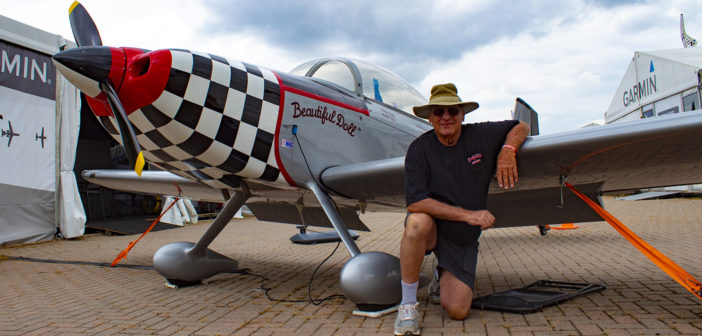
EAA AirVenture Oshkosh 2018: Danny King’s RV-8
Our friend Danny King brought his Van’s RV-8 to EAA AirVenture Oshkosh 2018, and let us show off his creation at our booth. A veteran aircraft builder and retired airline pilot, King knew the ‘eight’ was perfect the moment he saw it.
“I had been trying to resist the urge to build another airplane – I had already built the Pitts Special – and I knew how much effort and time it took. Then I came to Oshkosh in 1997, there was the RV-8, and I went ‘oh no.’ I tried to talk myself out of it, but it was just too good of a deal. I went ahead and built the ‘eight’ which was the smartest thing I ever did,” said King.
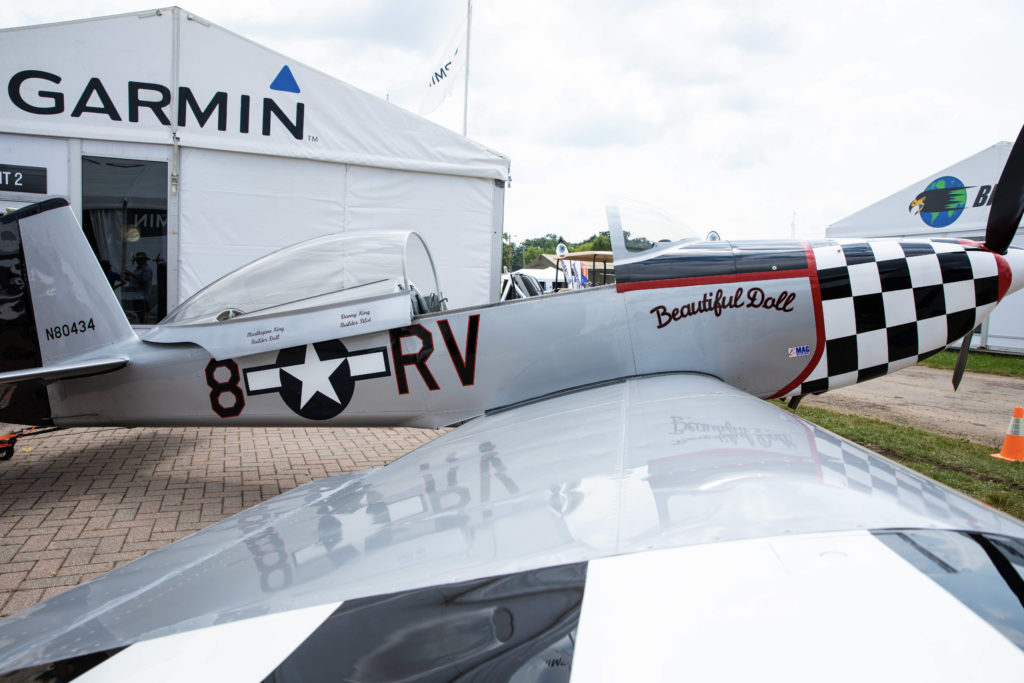
King first flew his RV-8 in 2000, and since then, the avionics have been updated. It features three 7-inch portrait G3X Touch displays with primary flight display (PFD), multifunction display (MFD) and engine information system (EIS) functionality. Behind the scenes, our dual-axis G3X autopilot is able to integrate with the G3X Touch flight display system. Plus, a GTN 650 GPS/Nav/Comm offers multifunction capabilities, and the GTX 330 ES transponder provides ADS-B “Out” for NextGen airspace compliance, and a remote mounted GDL 52R provides ADS-B “In” weather and traffic data along with SiriusXM Nexrad weather.
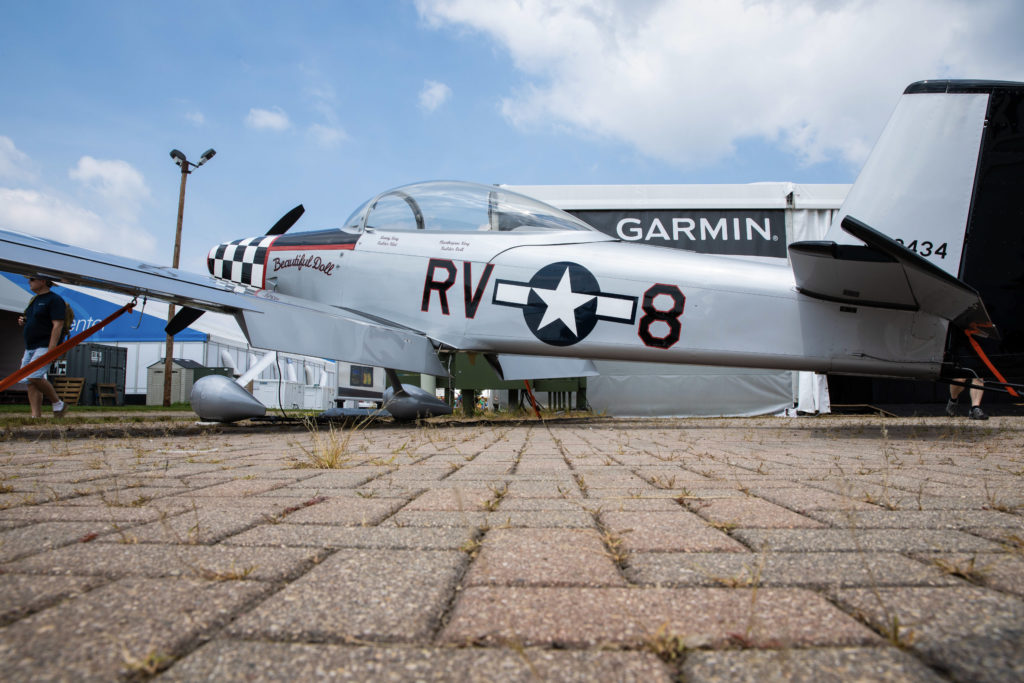
“I wanted Garmin avionics…they interface very well with their other products, and they have brought technology used in business aircraft down to the experimental market,” King said.
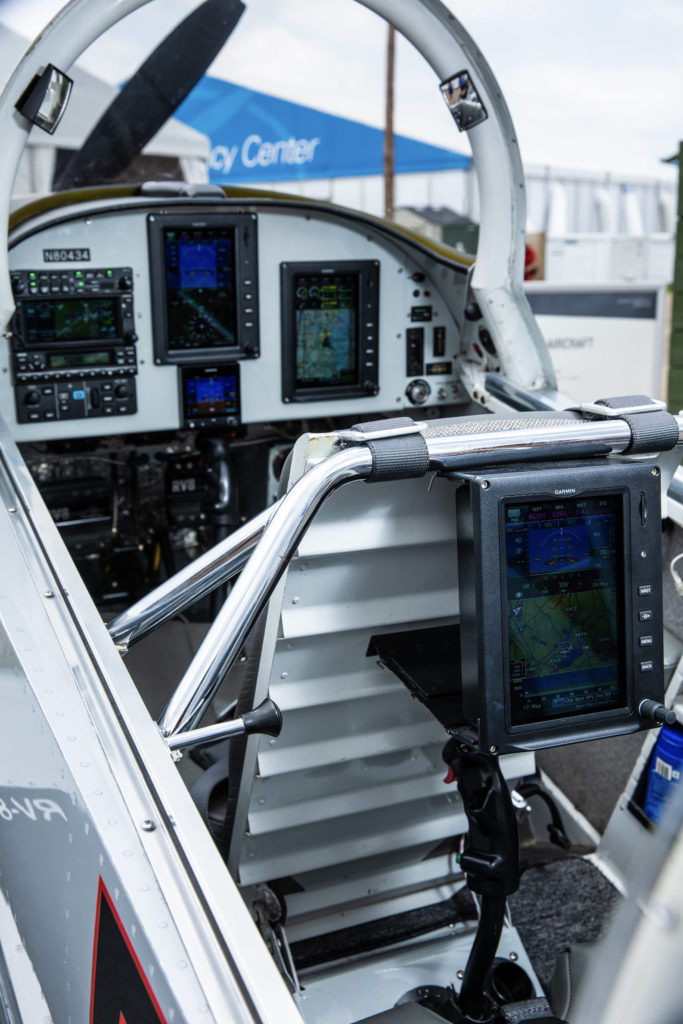
To see Danny King’s Van’s RV-8, visit our booth during EAA AirVenture Oshkosh 2018. For more information on our latest avionics solutions for experimental aircraft, visit garmin.com/experimental.
The post EAA AirVenture Oshkosh 2018: Danny King’s RV-8 appeared first on Garmin Blog.
https://www.garmin.com/en-US/blog/aviation/eaa-airventure-oshkosh-2018-danny-king-rv-8/
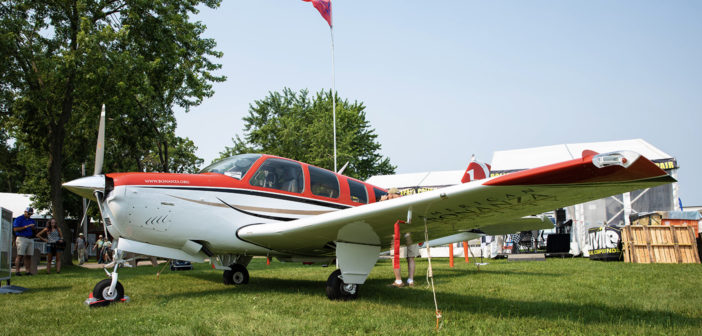
EAA AirVenture Oshkosh 2018: Beechcraft A36 Bonanza
The American Bonanza Society Air Safety Foundation brought their Beechcraft A36 Bonanza to Oshkosh 2018. This 1981 model is used by the organization as a tool to train Bonanza pilots, flight instructors and mechanics through videos, seminars and hands-on activities.
“The ABS Air Safety Foundation exists to support pilots, mechanics and flight instructors in Beechcraft piston airplanes—specifically Bonanzas, Barons, Debonairs and Travel Airs,” said Thomas Turner, Executive Director – Air Safety Foundation, ABS Magazine Editor. “We’re part of the American Bonanza Society—ABS has been in existence for over 50 years—and our mission statement is to protect lives and preserve the Beechcraft fleet. Everything we do in the Air Safety Foundation is oriented along those lines.”
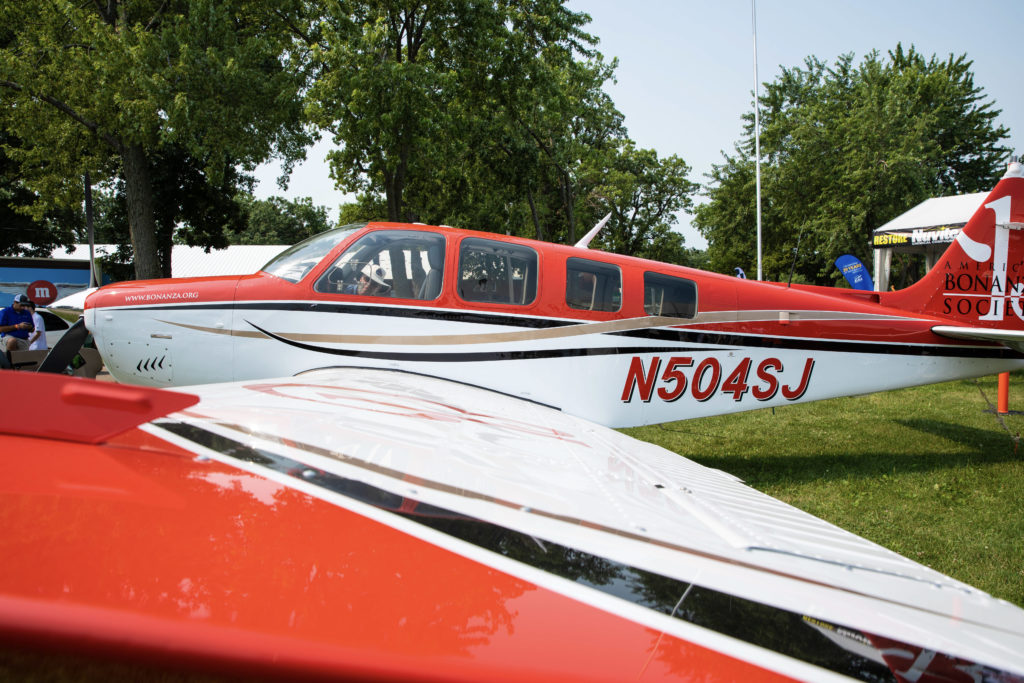
“Several years ago, one of our very generous members left a large sum of money in his estate to the ABS Air Safety Foundation specifically to promote pilot and flight instructor training, and our board of directors elected to purchase an A36 Bonanza to use as a training aircraft and more importantly as a subject of training videos to improve and enhance the existing programs we have, and create new programs for training pilots and flight instructors.”
The ABS Air Safety Foundation Bonanza features a 10.6-inch G500 TXi flight display that includes the optional engine information system. Our versatile G5 electronic flight instrument is utilized as a backup indicator, and new GFC 600 3-axis retrofit autopilot with pitch trim provides the legacy aircraft a modern and reliable solution. GTN 750 and GTN 650 provide GPS/Nav/Comm and multifunction display capabilities, along with our Flight Stream 510 providing wireless connectivity within our Connext ecosystem. Our popular GTX 345 ADS-B “In/Out” transponder brings the aircraft into compliance with NextGen airspace requirements, while also allowing ADS-B “In” traffic and weather to be displayed on compatible mobile devices. Cockpit audio comes from our GMA 350c Bluetooth and voice command-enable audio panel.
“This full panel of equipment really brings this airplane into the 21st Century,” Turner said.
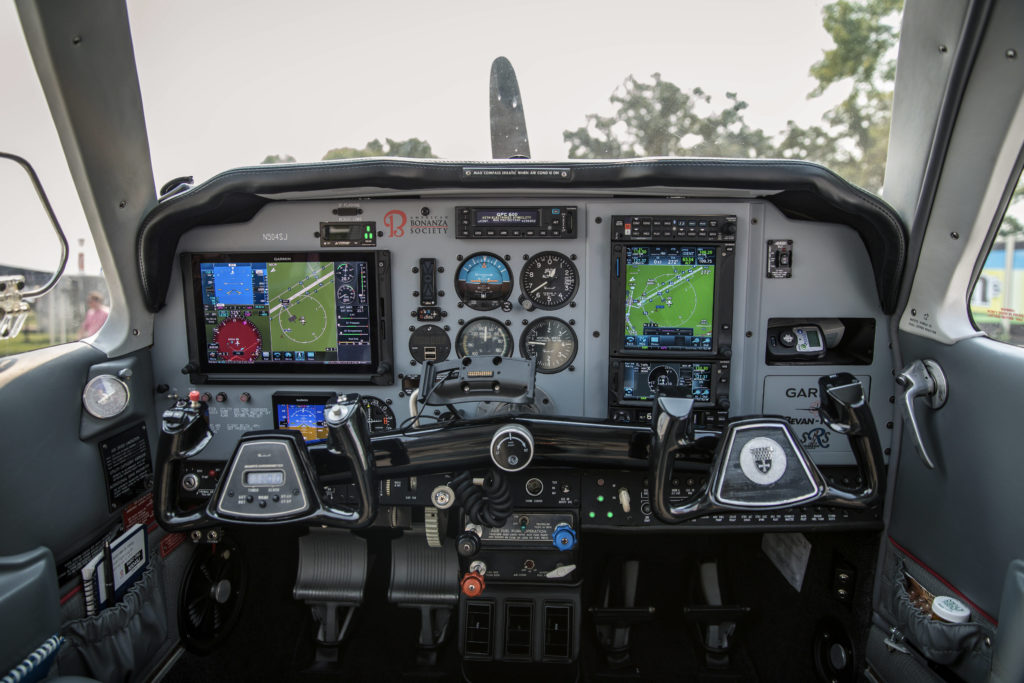
To learn more about the American Bonanza Society Air Safety Foundation Bonanza, check it out at their booth during EAA AirVenture Oshkosh 2018. For more information about our latest avionics solutions, visit us just west of Boeing Plaza on Celebration Way, or visit garmin.com/aviation.
The post EAA AirVenture Oshkosh 2018: Beechcraft A36 Bonanza appeared first on Garmin Blog.
https://www.garmin.com/en-US/blog/aviation/eaa-airventure-oshkosh-2018-beechcraft-a36-bonanza/
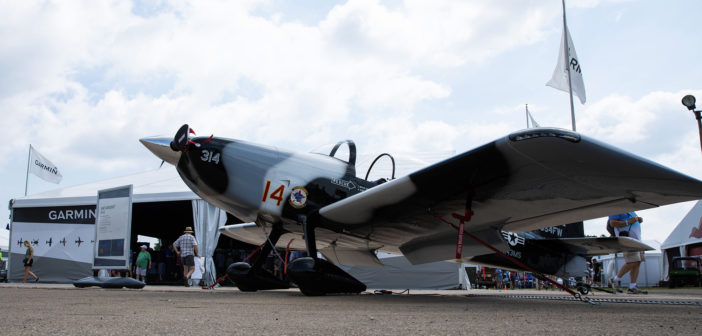
EAA AirVenture Oshkosh 2018: Van’s RV-8
Van’s aircraft has been a pioneer in the experimental aircraft with more than 10,000 examples flown to date. Featuring a desirable tandem cockpit configuration, the RV-8 has become a popular kit-build option for the many amateur aircraft builders.
This RV-8 on display at EAA AirVenture Oshkosh features dual 10.6-inch G3X Touch Displays that can function as primary flight displays (PFD), multifunction displays (MFD) plus optional highly configurable engine indication system (EIS). It also boasts our dual-axis G3X autopilot system that incorporates brushless DC servos for crisp responses and a smooth ride. Our GMA 245 Bluetooth audio panel, enables easy access to audio entertainment and phone calls with “home theater” quality sound alongside a GTN 650 GPS/Nav/Comm/Multifunction display. Behind the scenes, a GTR 20 comm radio and GTX 23 ES ADS-B “Out” transponder are remotely mounted but integrate well with the G3X Touch system.
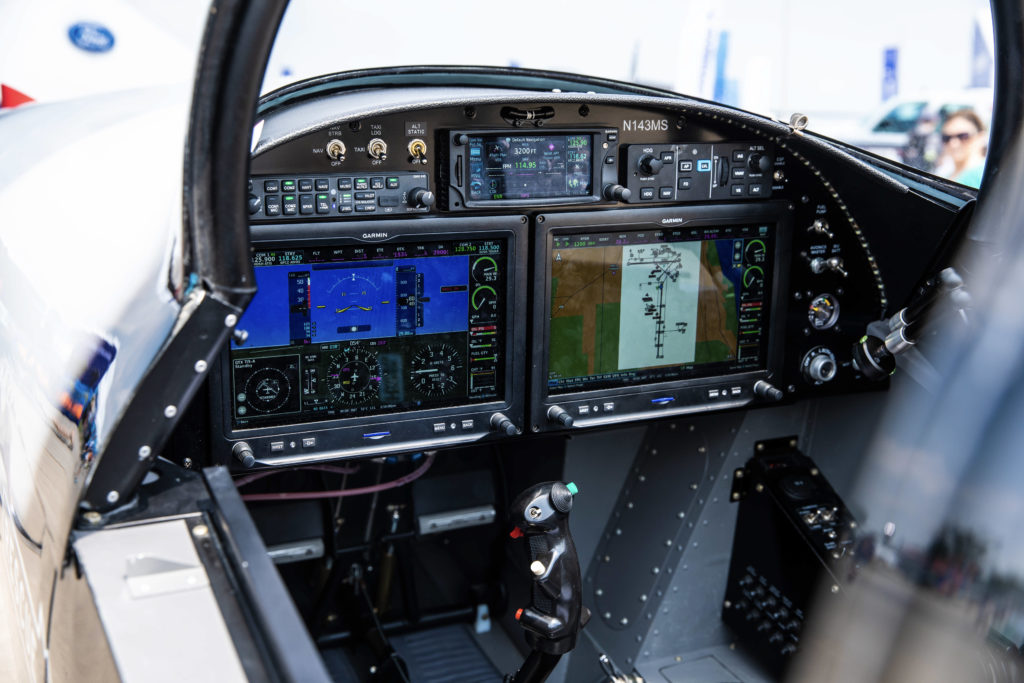
Learn more about this RV-8, and all of our experimental and certified avionics solutions at EAA AirVenture Oshkosh 2018. To find your perfect experimental solution, visit www.garmin.com/experimental.
The post EAA AirVenture Oshkosh 2018: Van’s RV-8 appeared first on Garmin Blog.
https://www.garmin.com/en-US/blog/aviation/eaa-airventure-oshkosh-2018-vans-rv-8/
EAA AirVenture Oshkosh 2018: Beechcraft Baron 58
Our first featured aircraft of EAA AirVenture Oshkosh 2018 is the 1994 Beechcraft Baron 58. This popular, light twin-engined piston aircraft features our latest avionics tailored for the legendary Beechcraft design.

Beechcraft Baron 58 panel.
Up front, this Baron features a 10.6-inch G500 TXi primary flight display (PFD) on the pilot’s side, accompanied by dual portait 7-inch G500 TXi on the copilot’s side for PFD and EIS (engine information system) capability. Along with the TXi displays, it includes GTN 750 and GTN 650 units for GPS/Nav/Comm/MFD functionality plus our Flight Stream 510, allowing wireless connectivity to our Connext ecosystem. Plus our latest GFC 600 three-axis retrofit autopilot with pitch trim.
The Baron also features several remote-mounted products, including GWX 75 Dopper-capable weather radar, GDL 69A SiriusXM weather and radio datalink, GMA 35c Bluetooth and voice command-enabled audio panel, GTX 345R ADS-B In/Out transponder and a GSR 56 global voice/text/position satellite datalink.
To learn more about our latest avionics for general aviation aircraft, check them out at EAA AirVenture Oshkosh along Celebration Way, or visit our website at garmin.com/aviation.
The post EAA AirVenture Oshkosh 2018: Beechcraft Baron 58 appeared first on Garmin Blog.
https://www.garmin.com/en-US/blog/aviation/oshkosh-2018-beechcraft-baron-58/
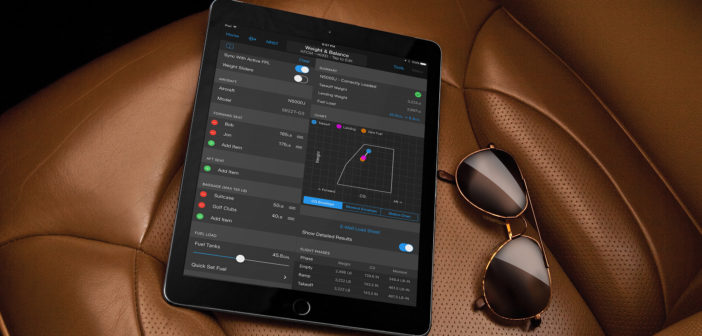
Garmin Pilot: Real-Time Engine Data Display, Document Viewer, Enhancements and More
We are introducing several new features and enhancements to our Garmin Pilot app for Apple and Android mobile devices. Among the updates, wireless real-time display and play-back of engine data is available within Garmin Pilot via Flight Stream 510 when the app is paired with an EIS-capable TXi flight display or the G1000 NXi integrated flight deck. A new document viewer provides easy access to the Garmin aviation library, as well as access to popular cloud storage providers, and the addition of weather improvements further enhance the app. New for Android, weight and balance calculations and several more features aid in flight planning. These new capabilities offer greater utility within a single application and more integration within the Garmin ecosystem.
“With Garmin Pilot, customers receive an optimized Garmin experience, whether it’s monitoring engine performance, accessing Garmin pilots guides within the document viewer, database loading or wirelessly transferring flight plan data – pilots have it all easily accessible at their fingertips,” said Carl Wolf, vice president of aviation marketing and sales. “Garmin Pilot is a comprehensive application with capabilities that no other app on the market can deliver. A simple and familiar user-interface that closely represents Garmin avionics, cutting-edge integration and a competitive feature set combine to offer pilots the best value in the industry.”
Garmin Pilot for Apple mobile devices
flyGarmin and Engine Information System (EIS) analytics
Exclusive to Garmin, customers will be able to utilize Garmin Pilot on Apple mobile devices to view real- time engine information via Flight Stream 510 when the app is paired with an EIS-capable TXi flight display or the G1000 NXi integrated flight deck. Upon landing, the flight data log is wirelessly uploaded to the flyGarmin website and is stored securely within the app and on flyGarmin. Within the flyGarmin website, pilots can access detailed information related to any flight, play back the flight and download data logs. Pilot-configurable exceedances can also be set within the flyGarmin website. In the event an exceedance occurs, pilots can receive an email alert that details that particular exceedance. Utilizing Garmin Pilot alongside an EIS-capable TXi flight display or G1000 NXi, pilots are provided with a comprehensive, in-depth look at engine performance and trend data and can more easily troubleshoot and identify potential issues.
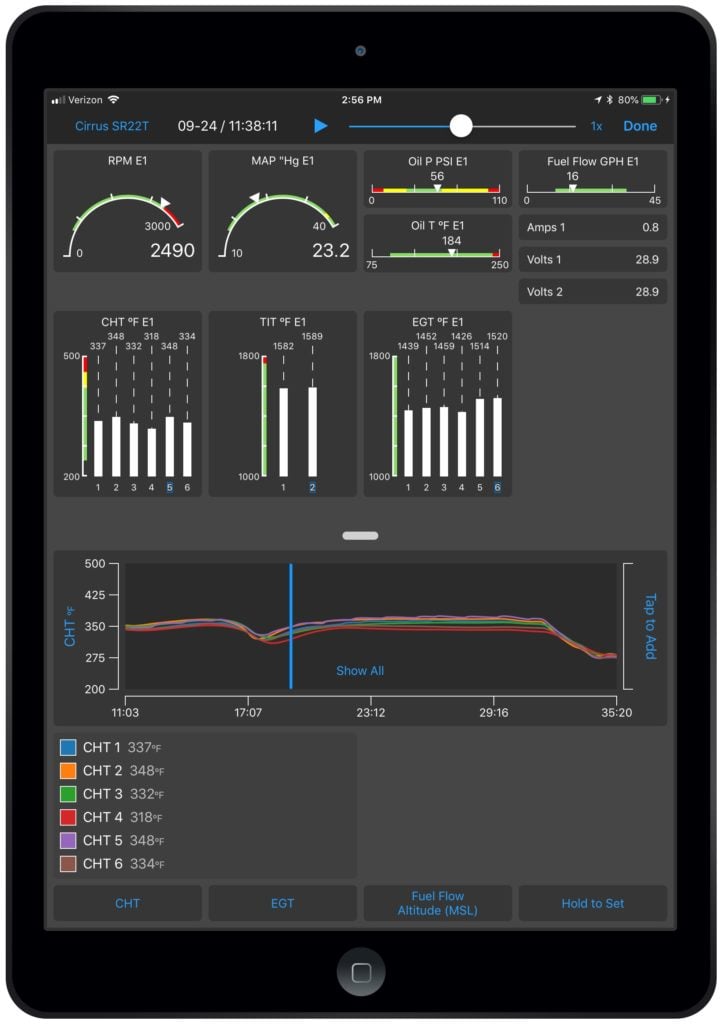
Garmin Pilot EIS on iOS
Best-in-class document viewer
The new document viewer within Garmin Pilot helps pilots better organize and access a variety of informational products, including the latest Garmin library of manuals such as pilots guides and cockpit reference guides, aviation handbooks and more. The premium version of Garmin Pilot allows customers to access popular cloud storage sites like DropBox to create and add their own documents such as an aircraft flight manual (AFM) in PDF, JPG and PNG formats. Additionally, pilots can bookmark all electronic documents and highlight them for easy recall within the app.
Additional enhancements expected to be available for Apple mobile devices:
- The flight profile view within the app displays Pilot Reports (PIREPs) alongside airspace, terrain, obstacles, TFR’s and weather.
- Pilots can view the Area Forecast Discussion (AFD) within Garmin Pilot, which is a plain-English narrative developed by meteorologists at the National Weather Service.
- Model Output Statistics (MOS) are accessible within the app, which displays a forecast similar in format to the Terminal Aerodrome Forecast (TAF). The MOS is updated hourly and the forecast extends 72 hours into the future.
- Within the U.S. and Europe, pilots can view base reflectivity radar, which utilizes the lowest elevation scan to display precipitation falling from the clouds better than other radar scans.
- Transitioning across multiple Apple mobile devices or adding a new device to an existing account is easier as user preferences such as weight and balance, charts, settings, downloads and more are saved to the flyGarmin website.
- The new D2 Delta PX aviator watch connects wirelessly to the app to display wrist-based Pulse Oximeter and heart rate data in the navigation bar and within the Connext Garmin Pilot also supports wireless flight plan transfer to the new D2 Delta aviator watch.
- Pilots can create a custom map shape file on a computer to design a customized map so it’s easier to reference their position relative to a specific geographic area, such as a practice area. This map file is transferred from a computer via email and then uploaded within the app.
Garmin Pilot for Android mobile devices
Garmin Pilot on Android mobile devices incorporates weight and balance calculations into a flight plan or a saved trip, taking into account fuel burn and more. Pilots can take advantage of pre-loaded aircraft types or enter aircraft weight and balance figures manually, noting the arm, moment and station of each point from the Pilot’s Operating Handbook (POH). Center of gravity (CG) is easily referenced in the application relative to an active flight plan. In the event CG limits entered within the app are not loaded within the envelope, pilots receive a notification. Additionally, customized weight and balance profiles can be shared across multiple Garmin Pilot accounts.
Additional features expected to be available for Android mobile devices:
- Storm cell movement displays the projected path of a storm. An orange circle paired with a line that extends from the strongest storm cells shows its potential path in 15, 30, 45 and 60-minute intervals. If hail or tornadic activity is present, a corresponding icon will also be displayed alongside the particular storm cell line.
- Pilots can also view the Area Forecast Discussion (AFD) that is disseminated in a plain-English narrative within the app.
- The new D2 Delta PX aviator watch and Garmin Pilot connect to display Pulse Oximeter1 and heart rate data in the navigation bar and within the Connext® Wireless fight plan transfer to the watch is also supported by the app.
The newest release of Garmin Pilot for Apple and Android mobile devices is expected to be available next week during the 2018 EAA AirVenture fly-in, in Oshkosh, Wis., July 23-29, 2018. For new customers, Garmin Pilot is available from the Apple App Store and Google Play Store as a free download for the first 30 days. After the 30-day trial period, customers may purchase an annual subscription of Garmin Pilot starting at $74.99. Visit www.garmin.com/aviation for additional information.
The post Garmin Pilot: Real-Time Engine Data Display, Document Viewer, Enhancements and More appeared first on Garmin Blog.
https://www.garmin.com/en-US/blog/aviation/garmin-pilot-real-time-engine-data-display-document-viewer-enhancements-and-more/
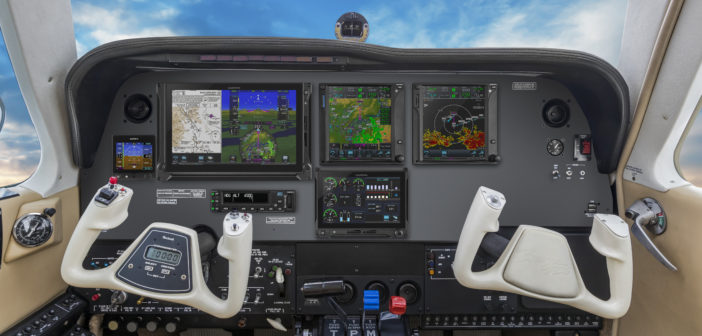
TXi Flight Displays, GTN Navigators, GFC Autopilots and G5 Electronic Flight Instrument Updates
We are adding significant capability, more configuration options and offering greater integration throughout the GTN 650/750 touchscreen navigators, the G500 TXi/G600 TXi and G500/G600 flight displays, as well as the GFC 600 & GFC 500 autopilots. Additionally, the G5 electronic flight instrument for certificated aircraft is being approved for use as a standby instrument when paired with the G500 TXi or G500 flight displays. The GFC 500 autopilot will also be approved for installation with the G500 TXi or G500 flight displays, while the addition of descent vertical navigation (VNAV) within the GTN will aid in descent planning. With Garmin, pilots receive a seamlessly integrated cockpit that offers a more harmonious transition among avionics, which reduces pilot workload and provides a superior in-flight experience.
“The Garmin avionics ecosystem continues to provide pilots with optimized upgrade opportunities and unsurpassed capabilities within the cockpit,” said Carl Wolf, vice president of aviation marketing and sales. “We are committed to providing pilots with scalable, value-oriented solutions when selecting their panel configurations. For customers with these products currently installed, these software updates offer greater operational potential and a broader feature set than any other avionics solution on the market.”
GTN 650/750 descent vertical navigation
To assist in descent planning and energy management, pilots can take advantage of VNAV profiles throughout the enroute and terminal phases of flight within the GTN 650/750 touchscreen navigators when they’re paired with the G500 TXi/G600 TXi, G500/G600 or G5. Within the GTN, pilots can easily enter altitude constraints on the flight plan page to set-up a vertical descent profile. Pilots also experience a near-seamless transition from VNAV to an arrival and instrument approach. Once an arrival or approach is loaded and activated, the GTN automatically populates step-down altitudes or any applicable altitude restrictions. If ATC issues an unpublished altitude restriction, pilots can enter those altitudes manually into the active flight plan under the VNAV field.
As part of the VNAV profile, top of descent (TOD) and bottom of descent (BOD) values are also calculated and displayed on the moving map. As the aircraft arrives at TOD, the GTN displays a visual annunciation prompting the pilot to begin the descent. When paired with a display such as a
G500 TXi/G600 TXi, G500/G600 or G5, a vertical deviation indication (VDI) also populates on the display to provide vertical guidance for the descent. Additionally, when the GTN 650/750 series is paired with the GFC 600 or GFC 500 autopilot, pilots can select the VNAV button on the mode controller to fly a fully- coupled VNAV profile.
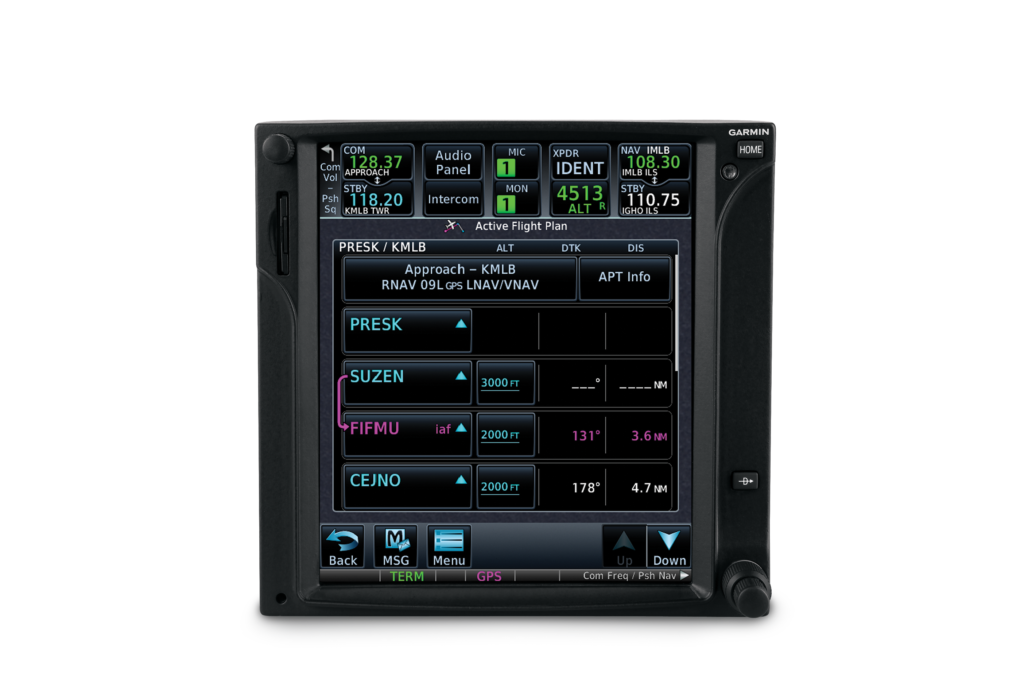
GTN 750
Approved as a standby: G5 electronic flight instrument
Our ever-popular G5 electronic flight instrument will soon be approved as a standby flight instrument when paired with the G500 TXi or G500 flight displays. In doing so, any adjustments made to heading bugs, altitude select, airspeed bugs, as well as the barometric pressure setting are automatically synced from the G500 TXi or G500 displays to the G5. Flight director and autopilot mode annunciations from the GFC 500 can also be viewed across all displays, including G5. Over 600 aircraft will be approved for the installation of G5 as a standby flight instrument alongside the G500 TXi or G500 flight displays.
GFC 500: Now approved for G500 TXi and G500-equipped aircraft
Aircraft owners can soon pair the economical GFC 500 autopilot with the G500 TXi or G500 flight displays, offering a fully-redundant, all-glass cockpit when paired with the G5. For example, in the unlikely event of a G500 TXi flight display failure, the G5 will remain coupled to the GFC 500 autopilot and continue to fly normal autopilot modes, including altitude select, heading, vertical speed and more. This compatibility significantly reduces pilot workload.
Course deviation indication (CDI) and VDI preview
A popular feature in turbine class aircraft, a CDI preview option allows pilots to view course and vertical deviation information prior to an instrument approach. When the GTN series is paired with the
G500 TXi/G600 TXi or G500/G600, pilots can view this feature within the HSI or lateral deviation indicator on the flight display. When GPS is the selected CDI source, information such as a course pointer, lateral deviation, station ID and the numeric inbound course automatically populate on the HSI in gray when an instrument approach is loaded. For ILS and GPS approaches with vertical guidance, a preview of the VDI also populates on the TXi series, G500/G600 or G5, allowing pilots to view glideslope or glidepath deviation prior to the descent.
Garmin Pilot and Engine Information System (EIS) analytics
Exclusive to Garmin, customers can now utilize Garmin Pilot on Apple mobile devices to view real-time engine information via Flight Stream 510 when the app is paired with an EIS-capable TXi flight display or the G1000 NXi integrated flight deck. Upon landing, the flight data log is wirelessly uploaded to the flyGarmin website and is stored securely within the app and on flyGarmin. Within the flyGarmin website, pilots can access detailed information related to any flight, play-back the flight and download data logs.

Garmin Pilot EIS on iOS
New TXi display orientations, configurations and capabilities
The TXi family adds even more options, such as:
- The 10-inch TXi flight display can be configured to a 40% PFD and 60% MFD split-screen layout.
- On a 7-inch portrait or landscape G500 TXi/G600 TXi, the displays can be configured to view moving map and single-engine information simultaneously.
- The 7-inch landscape TXi display can be used as a PFD, adding installation flexibility in aircraft panels that are space-limited.
- With a compatible camera, pilots can optionally display multiple video inputs on the MFD of a TXi display.
- Within EIS-capable TXi displays, pilots can select and view individual cylinder head temperature (CHT) values.
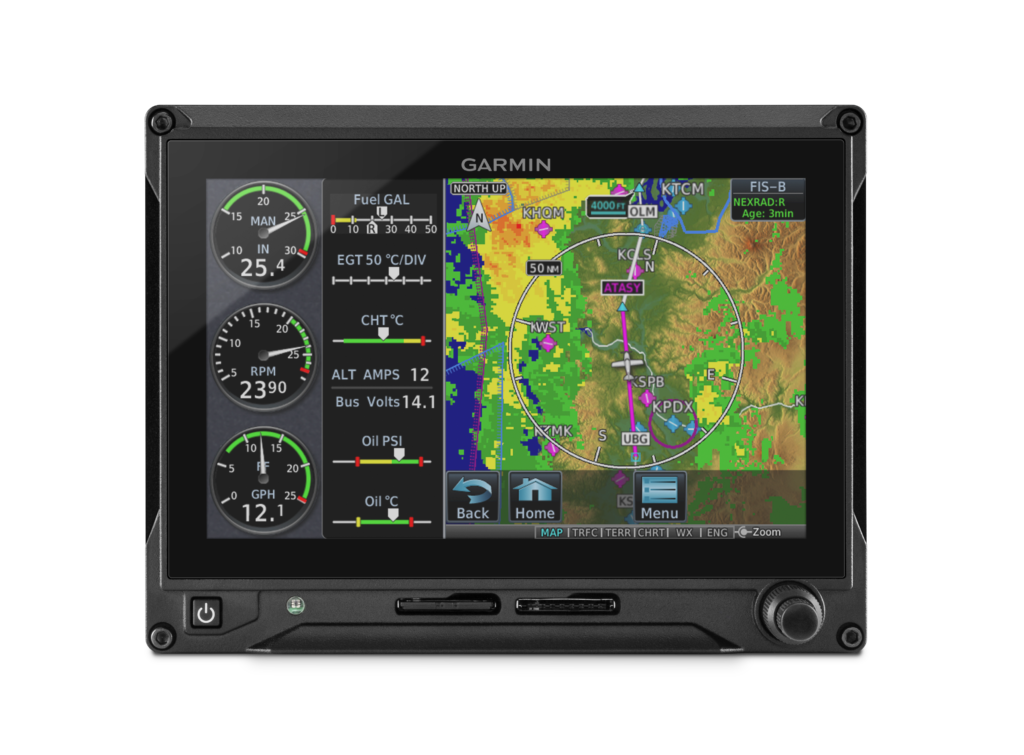
G500 TXi
GTN 650/750 series enhancements
The GTN 650/750 touchscreen navigators also incorporate a variety of additional features, including:
- The addition of new audible and visual terrain proximity alerts, including, “terrain ahead, pull up”, “obstacle ahead, pull up” and “wire ahead.” An aural “five-hundred” annunciation is also available when the aircraft is on approach to land.
- Pilots can now set a user-defined waypoint as an airport so terrain alerts are minimized while landing at an airport that is not in the aviation database.
- The addition of a QWERTY keyboard within the GTN 650/750 and the G500 TXi/G600 TXi gives pilots a more familiar way to input information.
- Pilots can configure COMM sidetone settings within the GTN series.
- Irish, Swiss and English coordinate systems are now supported so it’s easier for pilots to enter GPS coordinates in various formats, including latitude/longitude, degrees/minutes/seconds and decimal degrees.
- The new GWX 75 weather radar is now supported by the GTN touchscreen navigators and the G500 TXi/G600 TXi flight displays, which offers four-times more color contouring than typically found on other weather radars on the market.
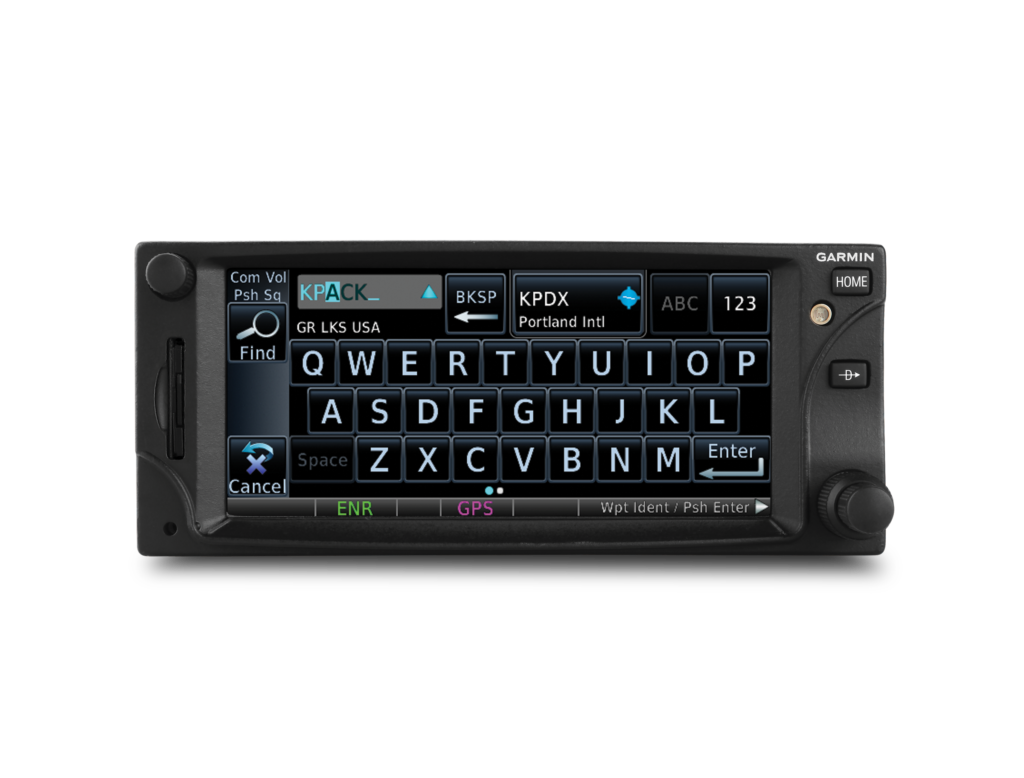
GTN 650
These software updates are available from Garmin Authorized Dealers for hundreds of aircraft makes and models, at no charge (dealer installation charge may apply). Our avionics are supported by our award-winning aviation support team, which provides 24/7 worldwide technical and warranty support. For additional information, visit www.garmin.com/aviation.
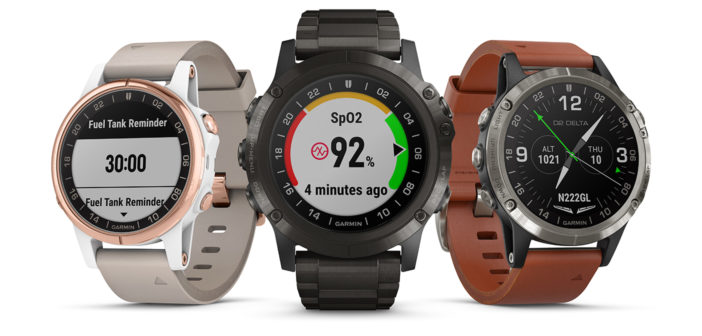
D2 Delta Series: The Latest Generation in Aviator Watches
Introducing D2 Delta PX, D2 Delta S and D2 Delta aviator watch series, three new GPS-enabled smartwatches built in a variety of sizes and personalities for pilots and aviation enthusiasts. New to the D2 aviator watch series, the D2 Delta PX incorporates built-in wrist-based Pulse Oximeter for oxygen saturation awareness. Additionally, all D2 Delta watches come with wireless connectivity with select Garmin avionics, Garmin Pay contactless payment solution, storage for music playlists and more. These features offer pilots more flexibility, greater connectivity and utility in a compact aviator watch that’s as functional as it is stylish.
“The D2 Delta series merges modern style and functionality in a sophisticated watch that is available in three distinct sizes tailored to male and female pilots and aviation enthusiasts,” said Carl Wolf, vice president of aviation marketing and sales. “Whether you’re climbing into a single-pilot cockpit on the weekend, shooting instrument approaches to minimums or flying professionally, the D2 Delta transforms the aviator watch market with exclusive aviation functions and connected features that appeal to every pilot – regardless of what flying they do.”
The premium D2 Delta PX features an elegant titanium gray diamond-like carbon (DLC) finish on a large, 51mm bezel. Especially useful in-flight and during high altitude activities, the D2 Delta PX exclusively incorporates wrist-based Pulse Ox to help monitor oxygen saturation levels.
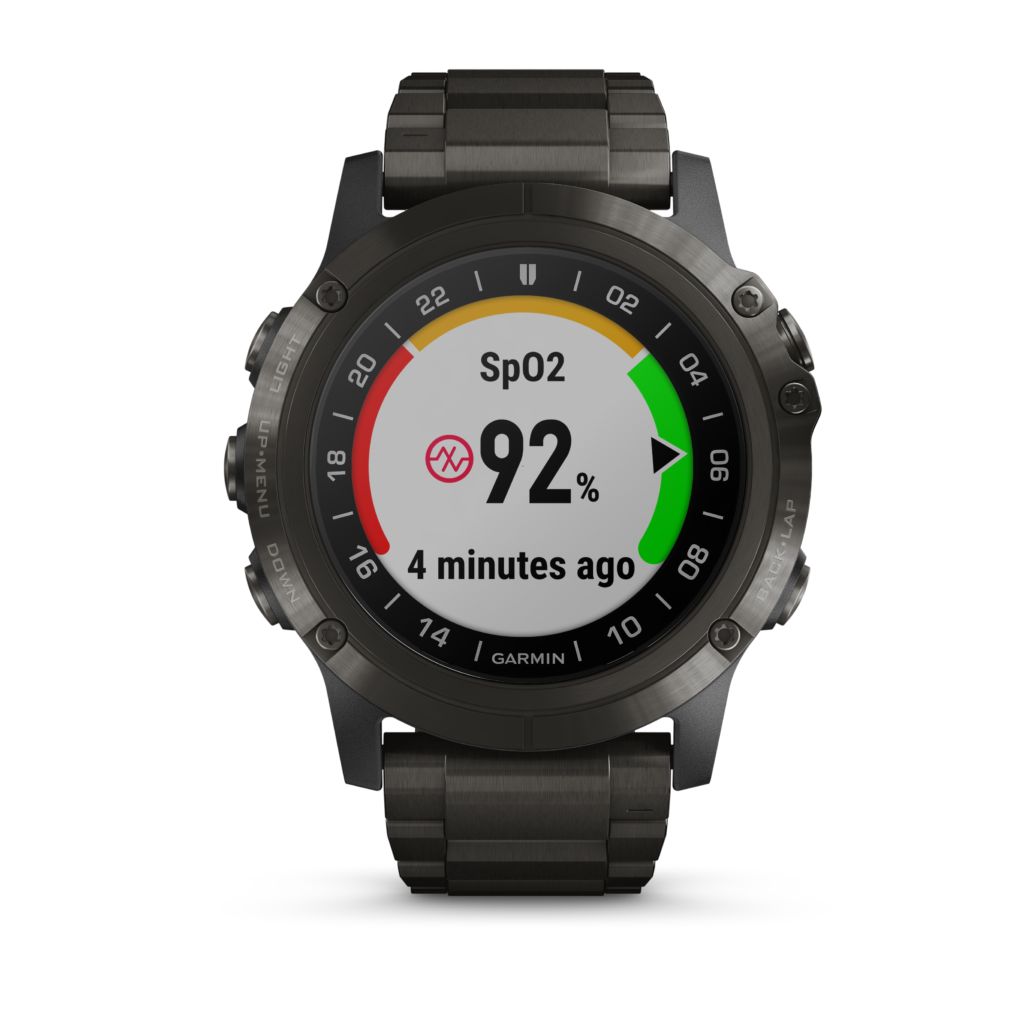
D2 Delta PX
The D2 Delta S features a stylish rose gold-tone bezel and is lighter, sleeker and smaller than previous D2 models. At 42mm, the D2 Delta S is ideal for smaller wrists and comes with a beige leather strap that makes it easy to transition from the cockpit to a night out. The third model in the series, the D2 Delta, measures 47 mm and has a silver titanium bezel, as well as a premium brown leather strap.
The D2 Delta series seamlessly integrates with select Garmin avionics to achieve a harmonious, connected cockpit. The D2 Delta can connect wirelessly to the Garmin Pilot app, as well as the
GTN 650/750 touchscreen navigator series or the G1000 NXi integrated flight deck via
Flight Stream 510 to enable wireless flight plan transfer to the watch. When connected, all models in the new D2 Delta series can receive additional information from compatible avionics including GPS position information, altitude, airspeed, groundspeed, magnetic heading, outside air temperature and more.
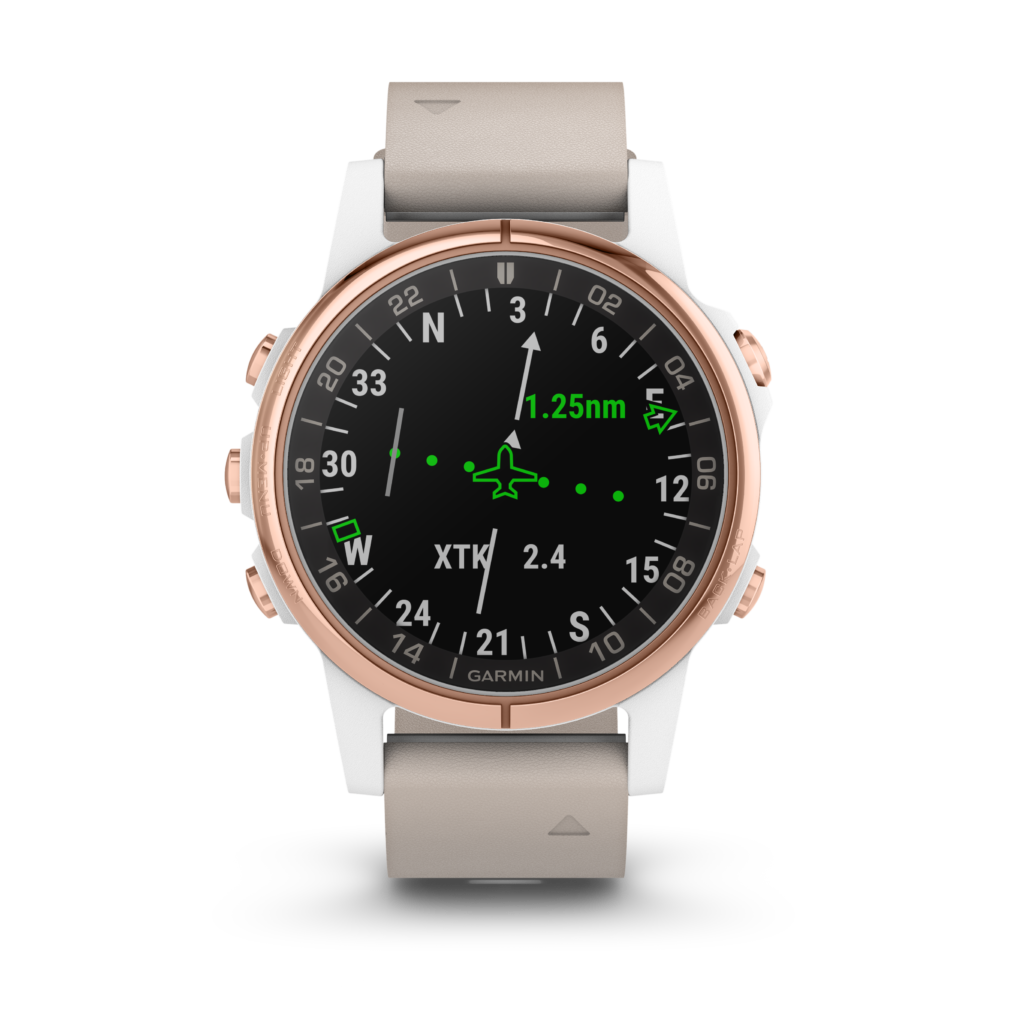
D2 Delta S
Bluetooth-capable music streaming enriches every activity as all models of the D2 Delta incorporate integrated music storage of up to 500 songs within the watch, offering phone-free listening. Download playlists from select music streaming services or transfer customized playlists from a computer directly to the watch. Once the playlist is loaded, pilots can pair a D2 Delta with a compatible Bluetooth Garmin audio panel such as the GMATM 245, GMA 345 or GMA 350c. The D2 Delta can also be paired with a Bluetooth headset or headphones (sold separately).
All sizes of the D2 Delta also include Garmin Pay, a contactless payment solution, allowing customers to leave their cash and credit cards at home. Utilizing their Garmin Pay wallet, customers have the same benefits and rewards of the physical cards, with the convenience of having them available on their wrist.
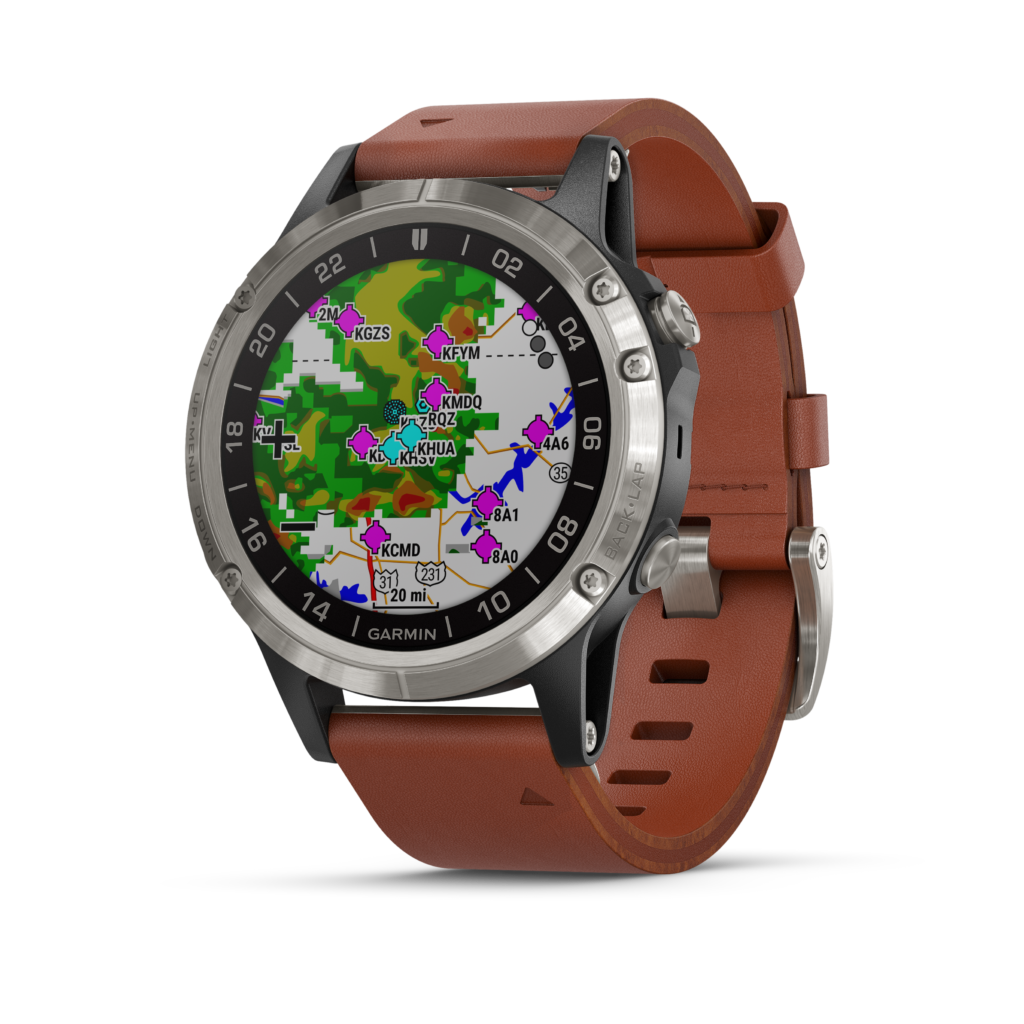
D2 Delta
The D2 Delta aviator watch series also features new smartwatch alerting tailored to aviation operations. These new alerts include:
- Configurable pressure altitude notifications, which consists of a series of vibrations when arriving at a selected altitude;
- A fuel tank timer that vibrates at configurable intervals to help remind pilots to switch fuel tanks while in-flight;
- A cross track error notification, which triggers a vibrating alert when pilots deviate from an active flight plan.
The D2 Delta aviator watch series come preloaded with a full multisport toolset for running, golfing, cycling, skiing, workouts and more. It is also water rated to 100 meters so it can withstand swimming and other water activities. When paired with a compatible smartphone, users can send, receive and respond to text messages and see social media updates, app alerts, calls, emails and more via the watch. Garmin Elevate wrist-based heart rate technology also monitors heart rate 24/7 alongside daily activity tracking. Because the D2 Delta is versatile and supports a variety of activities, QuickFit bands allow users to easily switch between stylish leather and metal accessory bands to sporty silicone in seconds and without tools.
All of the new D2 Delta models come preloaded with a worldwide aviation database and incorporate signature aviation accents, dedicated direct-to and nearest airport buttons, as well as the option to input a customizable aircraft tail number on the face of the watch. A large, sunlight-readable, high-resolution color display with an LED backlight on the watch face, allows pilots to view data in most lighting conditions in the cockpit. The D2 Delta PX offers up to 18 hours of battery life in GPS and Pulse Ox mode and up to 20 days in smartwatch mode
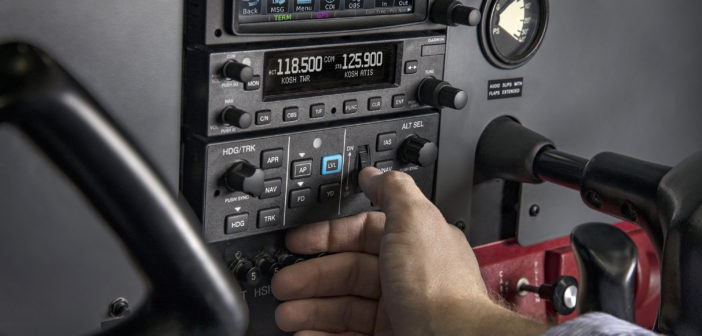
Blue Button: Helping to Keep the Blue Side Up
Aircraft loss-of-control scenarios in-flight are one of the foremost safety concerns in aviation today. It’s become such a safety concern that it’s landed a spot on the National Transportation Safety Board’s Most Wanted List. At Garmin, we’re doing our part to help put an end to these dangerous events. And one of our tools is our “blue button.”

GMC 507 mode controller for GFC 500 digital autopilot, featuring the blue return-to-level mode button.
Officially referred to as the return-to-level (LVL) mode button, this dedicated button has been incorporated in select Garmin integrated flight decks featuring GFC 700, plus our new, cost-effective GFC 500 and GFC 600 retrofit autopilots — along with several Garmin autopilot solutions for experimental and light sport aircraft.
So, what exactly does the blue button do? In short, it puts the blue side — the sky — up. When the level mode button is activated in-flight, the autopilot automatically engages and works to return the aircraft to a straight-and-level condition.
We’ve heard the common scenarios that lead to loss of control before, including spatial disorientation from entering inadvertent IMC, from loss of situational awareness in the soup or even from steep turns. Fortunately, with our blue button, we’ve created a tool that can help.
For more information about the LVL Mode “blue button,” or to learn more about our autopilot solutions, visit our website at Garmin.com/aviation
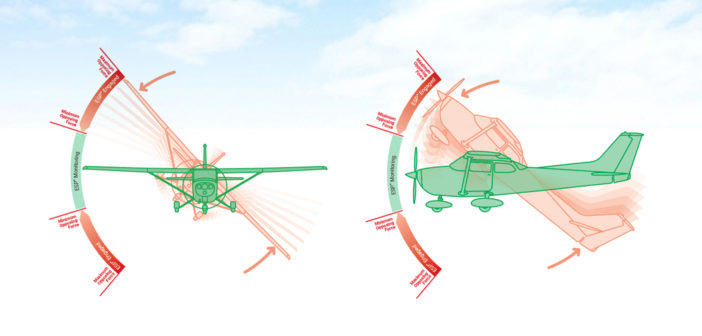
Understanding Garmin Electronic Stability & Protection (ESP)
E-S-P. Three simple letters, with an extremely powerful meaning: Electronic Stability & Protection. It’s a feature our team designed to keep a watchful eye on an aircraft’s flight condition — and lend a helping hand if needed.
What is ESP? ESP is a safeguard created to assist you in maintaining safe, stable flight when hand-flying your aircraft. It monitors the aircraft’s flight condition, functioning independently of the autopilot, and it applies a control force toward stable flight whenever pitch or roll deviations exceed recommended limits. ESP can also recognize when underspeed or overspeed conditions are about to occur — such as a stall or too-steep of a descent — and it makes appropriate adjustments to the controls. Plus, if the system detects that ESP has been activated for a specified period of time — such as in the event of pilot incapacitation — the autopilot will engage with the flight director in level mode to bring the aircraft back to level flight. However, if you’re training or practicing, ESP can be manually disabled to allow intentional flight maneuvers.
Where is ESP? ESP can be found in many of our most popular integrated flight decks, including a number of G1000 NXi- and G3000-equipped aircraft, along with our new cost-effective GFC 500 retrofit autopilot for light single-engine aircraft, and GFC 600 retrofit autopilot for high-performance, more complex aircraft. Experimental/LSA owners and pilots can also take advantage of ESP with our G3X and G3X Touch experimental flight display systems by utilizing compatible G3X autopilot servos.
How can ESP help? Lately, an important discussion within the aviation community has centered around aircraft loss-of-control scenarios—in fact, it’s on the NTSB’s “Most Wanted” list. ESP is a direct result of these conversations. By helping to avoid the onset of inadvertent stall/spins, steep spirals or other loss-of-control situations, we want to help make the flight environment even better.
For more information about ESP, plus our extensive line of aviation products, visit our website at garmin.com/aviation.
